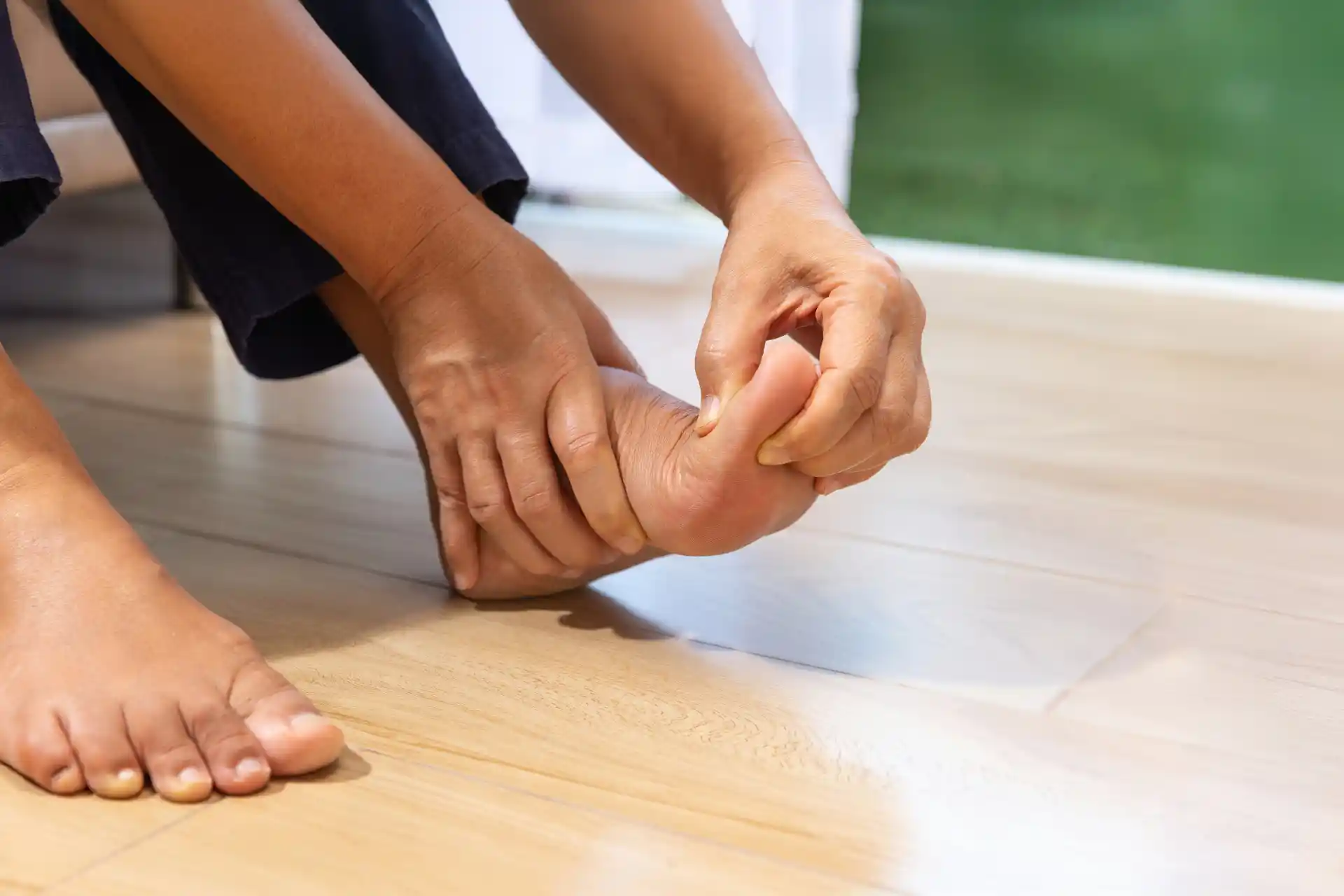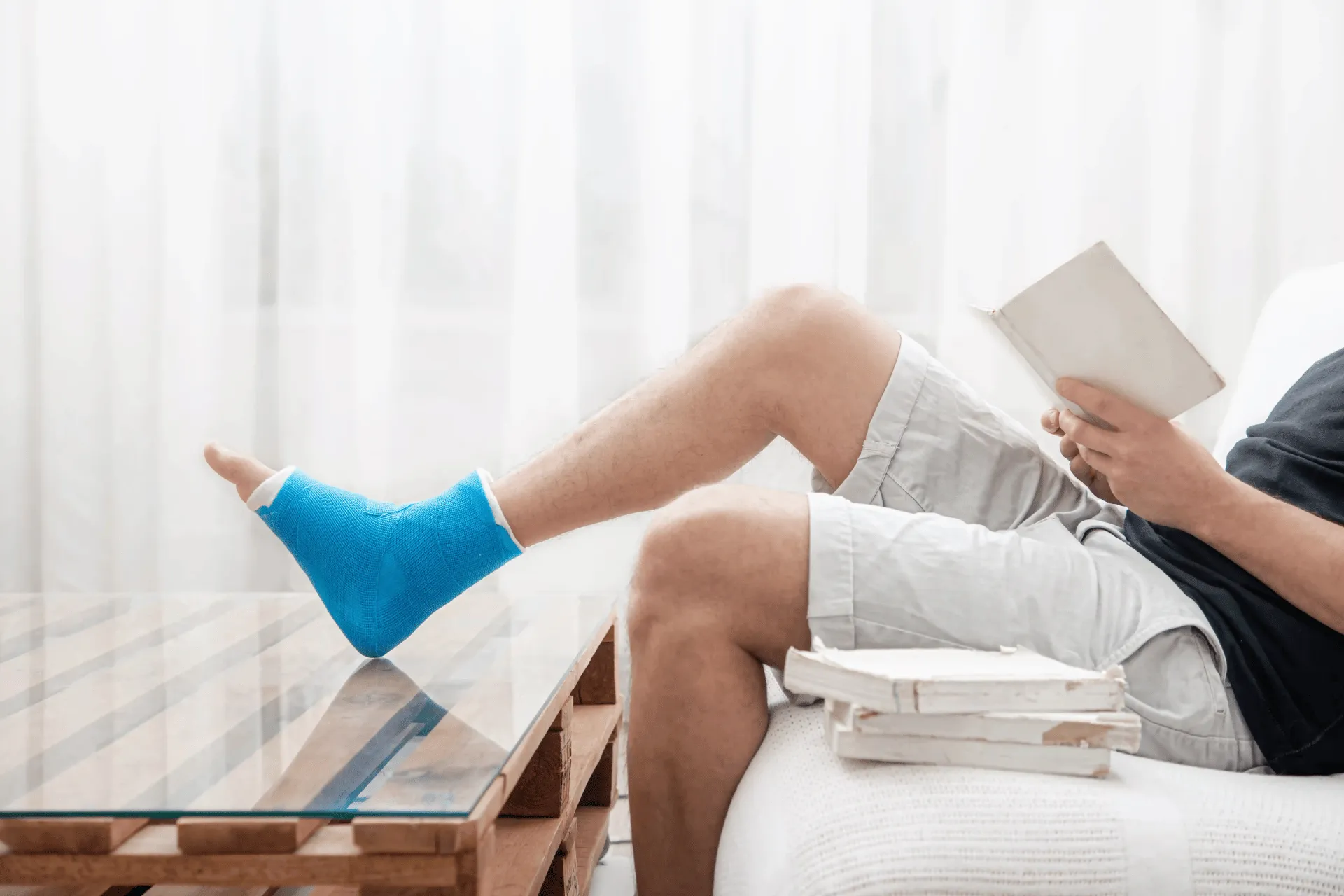Understanding the 4 types of Guillain-Barré syndrome required finding clear, data-backed information that can help you feel more at ease.
Guillain-Barré syndrome (GBS) is a rare, rapidly progressing nerve condition that can cause sudden weakness or paralysis, often following an infection.
One-third of GBS cases affect breathing muscles, making it a serious disorder that may require intensive care. With proper treatment and supportive therapies, many people see a significant recovery (WHO).
Below, you’ll discover the common signs, possible triggers, and the distinct features of each GBS variation.
Explore Guillain-Barré Syndrome
Guillain-Barré syndrome is an autoimmune condition in which your immune system mistakenly attacks your nerves. This disturbance can lead to tingling, numbness, or weakness that starts in your feet or hands and can move upward.
In severe cases, you may find it difficult to breathe or swallow. The Mayo Clinic notes that GBS can develop quickly, making it hard to diagnose in the early stages because symptoms can overlap with other nerve disorders.
However, recognizing some of the hallmark signs can help you seek timely medical attention:
- Progressive weakness in your legs, arms, or face
- Tingling or “pins-and-needles” sensations in your extremities
- Difficulty with speech or swallowing (in severe forms)
- Possible breathing problems if chest muscles are involved
Medical experts often cite infections with bacteria like Campylobacter jejuni or certain viruses as triggers for GBS.
In rare instances, medical procedures or vaccines may also play a part.
If you’re curious about other nerve-related issues, you might find it helpful to read about peripheral neuropathy, median nerve compression, plantar fasciitis, and rheumatoid arthritis for broader insights into how nerve damage can occur.
Understanding the 4 Types of Guillain-Barré Syndrome
Although Guillain-Barré syndrome can appear differently from person to person, specialists commonly classify it into the four main types below.
Understanding these types can shine a light on what symptoms to watch for and what you might expect during your initial assessment and recovery.
Acute Inflammatory Demyelinating Polyneuropathy (AIDP)
AIDP is the most common type of GBS in North America and Europe, accounting for about 90% of cases (Medscape). It primarily affects the myelin sheath, the protective insulation around peripheral nerves.
- Typical symptoms: Tingling or weakness in the legs that gradually spreads upward, sometimes reaching the arms and face. While movement is affected most, some people also experience numbness or pain.
- Treatment and outlook: Therapies such as intravenous immunoglobulin (IVIG) or plasmapheresis can speed recovery. Most people regain much of their mobility, though about 30% may continue to experience some weakness up to three years later.
Acute Motor Axonal Neuropathy (AMAN)
AMAN is more often seen in Asia, Mexico, and South America, and is less common in the United States. Unlike AIDP, it targets the axons—the inner nerve fibers that transmit movement signals.
- Typical symptoms: Rapidly progressing weakness, often starting in the legs. Weakness can also appear symmetrically in both arms or affect facial muscles.
- Causes and associations: In many cases, AMAN follows an infection with Campylobacter jejuni. Antibodies produced during the infection mistakenly attack the motor nerves.
- Treatment and outlook: Early detection and therapies such as IVIG can help shorten the disease course and reduce long-term complications.
Because AMAN progresses quickly, timely medical attention is key to improving outcomes (Cleveland Clinic).
Acute Motor-Sensory Axonal Neuropathy (AMSAN)
MSAN is similar to AMAN but more severe because it involves both motor and sensory axons.
- Typical symptoms: Weakness and paralysis in arms and legs, along with numbness, loss of reflexes, and reduced ability to sense pain or temperature.
- Recovery process: Healing is often slower than other types and may take months or more than a year. Physical and occupational therapy play a key role in regaining strength and function (Medical News Today).
- Tracking symptoms: Patients often notice persistent tingling in toes, fingers, or both hands and feet. Monitoring these changes helps guide rehabilitation.
Although AMSAN can cause significant disability at first, structured therapy and patience are critical to long-term recovery.
It’s helpful to track symptoms like tingling in hands and feet over time as it can also arise from nerve inflammation or compression.
Miller Fisher Syndrome (MFS)
Miller Fisher syndrome is an uncommon variant of GBS that affects the cranial nerves in the head.
- Hallmark symptoms: A triad of eye muscle paralysis (ophthalmoplegia), poor coordination (ataxia), and absent reflexes (areflexia). This often results in difficulty moving your eyes, keeping your balance, and preventing your knees from buckling when you walk.
- Underlying mechanism: Over 80% of people with MFS test positive for anti-GQ1b antibodies, which specifically attack nerve fibers in the head and neck (EyeWiki).
- Treatment and outlook: MFS usually responds well to immunotherapy, and many people experience marked improvement within six months—sometimes without needing aggressive intervention.
While it can be frightening, Miller Fisher syndrome often improves steadily with appropriate treatment.
If you have trouble with coordination, your care team might suggest neuromuscular exercises or a nerve conduction study to pinpoint the exact location or extent of nerve impairment.
Understand Diagnosis And Treatment
Diagnosing Guillain-Barré syndrome (GBS) can be difficult at first, since its early symptoms resemble those of other nerve disorders (for instance, certain types of nerve damage symptoms present similarly).
That’s why healthcare providers typically use a combination of exams and tests rather than relying on just one method. .
Acting quickly is important—if symptoms progress to breathing difficulty, treatment should begin immediately rather than waiting for all test results.
How Doctors Diagnose GBS
- Neurological exam: A specialist checks your reflexes, muscle strength, and coordination. Loss of reflexes combined with weakness can point strongly toward GBS.
- Lumbar puncture (spinal tap): Fluid is taken from around the spinal cord and examined for protein levels. Elevated protein without high white blood cell counts is a common marker of GBS.
- Nerve conduction studies: Small electrical pulses are used to see how quickly and effectively nerves carry signals. Slowed conduction speeds can reveal nerve injury typical of GBS.
Together, these evaluations help confirm GBS and rule out other explanations. According to the World Health Organization (WHO), treatment should never be delayed if symptoms are severe.
Thinking ahead, you can explore neuropathy treatment strategies to understand other supportive interventions that may go along with your core treatment plan for GBS.
How GBS Is Treated
Once GBS is diagnosed, doctors usually turn to immunotherapy to calm the immune system attack on nerves.
Two options are considered equally effective:
- Intravenous immunoglobulin (IVIG): Antibodies collected from donors are given through an IV to block the harmful antibodies damaging your nerves.
- Plasmapheresis (plasma exchange): Your blood is filtered to remove those harmful antibodies, then returned to your body.
Additional care may include:
- Pain relief medications to manage burning or stabbing nerve discomfort.
- Blood clot prevention, since reduced mobility can increase clot risk.
- Mechanical ventilation if breathing muscles weaken, requiring temporary support in an intensive care unit.
These treatments don’t cure GBS, but they shorten recovery time and reduce the severity of symptoms.
Support Your Recovery
Recovering from Guillain-Barré syndrome can take weeks, months, or even a few years.
During this time, you might feel frustrated by stalled motor skills or chronic fatigue, but remember you’re not alone—an estimated 75% or more of individuals experience near-complete recovery (Medscape).
Here are some pointers for supporting your healing:
- Physical Therapy
Working with a licensed physical therapist is key. They design safe exercises tailored to your changing abilities. Gentle stretches, balance drills, and low-intensity strength training can slowly rebuild muscle control. - Occupational Therapy
An occupational therapist can help you regain everyday routines like dressing, cooking, or typing. Whether you need modifications at home or on the job, this specialized guidance can be a huge moral and practical boost. - Emotional Wellness
GBS can disrupt your life physically and mentally. You might worry about returning to normal tasks or fear setbacks. If possible, join a GBS support group or schedule counseling sessions to keep your stress in check and nurture a positive outlook. - Adaptive Equipment
Tools such as walkers, handrails, or supportive braces give you the stability you need early in recovery. Even a few gentle modifications around your home can supplement your therapy and help prevent falls. - Monitor Your Nerves
Because GBS affects the peripheral nerves, be watchful for changes in sensation or lingering numbness in your legs or arms. If you notice persistent numbness in feet or unusual sensations, flag it to your healthcare provider. Adjusting your therapy routine might help forestall potential nerve complications. - Fascial hydrodissection: This fluid-based treatment can release adhered fascia and soft tissue that can press on nerves—helping reduce tingling, burning, numbness, and nerve pain associated with GBS and other peripheral neuropathy conditions.1-7
Good news, dedicated rehabilitation programs can spark remarkable gains. Over time, small victories—like moving a finger more easily or walking a few extra steps—can add up.
Summary
Below is a quick recap of what you’ve learned:
- Guillain-Barré syndrome is an autoimmune disorder where the immune system mistakenly attacks nerves, often triggered by infection or surgery.
- The four main subtypes—AIDP, AMAN, AMSAN, and Miller Fisher syndrome—differ in which nerves they affect and how recovery progresses.
- Diagnosis combines neurological exams, spinal fluid analysis, and nerve conduction studies.
- Treatment relies on IVIG or plasmapheresis, along with supportive care for pain, clot prevention, and breathing assistance if needed.
- Rehabilitation through physical and occupational therapy is essential for regaining independence. Emotional support and adaptive equipment can further ease recovery.
While Guillain-Barré syndrome may be life-altering, you have a path toward improved health.
The 4 types of Guillain-Barré syndrome each have distinct features that can shape your experience, but staying informed empowers you to make proactive decisions with your medical team.
If you have related concerns, such as nerve pain or other forms of nerve injury, take a look at nerve pain or explore more about can nerve damage be repaired for additional guidance.
Above all, remain patient with your progress. Healing is a gradual process, and every small improvement matters. With the right care plan, a strong support system, and timely interventions, you can position yourself—and your nerves—on the road to recovery.
Seek RELIEF®
RELIEF® is a science-backed treatment that targets dysfunctional fascia, which may contribute to symptoms of nerve irritation and peripheral neuropathy.
Using a gentle technique called hydrodissection, RELIEF® releases adhered fascia and soft tissue that can press on nerves—helping reduce tingling, burning, numbness, and pain associated with GBS and other peripheral neuropathy conditions.1-7
RELIEF® is a minimally invasive alternative to traditional treatments and does not require steroids, long-term medication, surgery, anesthesia, or post-procedure immobilization.
If you’re in the Miami area and seeking relief from peripheral neuropathy, contact us today to schedule a consultation.

%20(1).webp)




.svg)